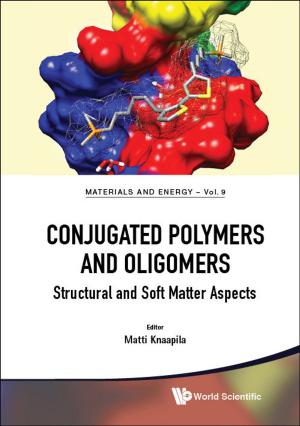Introduction to Practical Peridynamics
Computational Solid Mechanics Without Stress and Strain
Nonfiction, Science & Nature, Technology, Fracture Mechanics, Engineering, Mechanical| Author: | Walter Herbert Gerstle | ISBN: | 9789814699563 |
| Publisher: | World Scientific Publishing Company | Publication: | July 23, 2015 |
| Imprint: | WSPC | Language: | English |
| Author: | Walter Herbert Gerstle |
| ISBN: | 9789814699563 |
| Publisher: | World Scientific Publishing Company |
| Publication: | July 23, 2015 |
| Imprint: | WSPC |
| Language: | English |
Parting with the classical continuum concepts of stress and strain in the computational simulation of solids, this book proposes a peridynamic model that applies the model directly to particle lattices. The model is directly solvable on a computer.
Introduction to Practical Peridynamics is both a graduate-level textbook and a treatise. The text provides the necessary foundations to understand and apply the state-based peridynamic lattice model, as well as a guide for the practical use of the model — for solving realistic structural engineering problems (particularly in reinforced concrete structures) in elasticity, plasticity, damage, fracture, and large deformations.
Contents in this book include introductory chapters presenting the historical background of the subject; classical elasticity; computational solid modeling; continuum mechanics; fracture mechanics; particle dynamics simulations on parallel computers; as well as example simulations (with model applications).
Contents:
- Deformable Solids
- Beginnings of the Theory of Elasticity
- Continuum Mechanics
- Fracture Mechanics
- Bond-Based Continuum Peridynamics
- Particle Lattice Model for Solids
- Elastic Bond-Based Peridynamic Lattice Model
- State-Based Peridynamic Lattice Model (SPLM)
- Elastic SPLM
- Plasticity
- Damage
- Particle Dynamics
- Computational Implementation
- Simulation of Reinforced Concrete
Readership: Academic & professional; graduate students and professionals in the field of Engineering who deal with the computational simulation of solids — in particular those who would like to do so using a state-based peridynamic model that is applied directly to particle latices.
Key Features:
- Introduction to Practical Peridynamics provides the background necessary for students to understand and appreciate the peridynamic approach
- This is the first treatment of peridynamics as a lattice model, rather than as a continuum model
- This book presents the classical papers of Navier and Cauchy for the first time, annotated and in English
- This is the first book on peridynamics written as a textbook, appropriate for a graduate-level course, complete with exercises
Parting with the classical continuum concepts of stress and strain in the computational simulation of solids, this book proposes a peridynamic model that applies the model directly to particle lattices. The model is directly solvable on a computer.
Introduction to Practical Peridynamics is both a graduate-level textbook and a treatise. The text provides the necessary foundations to understand and apply the state-based peridynamic lattice model, as well as a guide for the practical use of the model — for solving realistic structural engineering problems (particularly in reinforced concrete structures) in elasticity, plasticity, damage, fracture, and large deformations.
Contents in this book include introductory chapters presenting the historical background of the subject; classical elasticity; computational solid modeling; continuum mechanics; fracture mechanics; particle dynamics simulations on parallel computers; as well as example simulations (with model applications).
Contents:
- Deformable Solids
- Beginnings of the Theory of Elasticity
- Continuum Mechanics
- Fracture Mechanics
- Bond-Based Continuum Peridynamics
- Particle Lattice Model for Solids
- Elastic Bond-Based Peridynamic Lattice Model
- State-Based Peridynamic Lattice Model (SPLM)
- Elastic SPLM
- Plasticity
- Damage
- Particle Dynamics
- Computational Implementation
- Simulation of Reinforced Concrete
Readership: Academic & professional; graduate students and professionals in the field of Engineering who deal with the computational simulation of solids — in particular those who would like to do so using a state-based peridynamic model that is applied directly to particle latices.
Key Features:
- Introduction to Practical Peridynamics provides the background necessary for students to understand and appreciate the peridynamic approach
- This is the first treatment of peridynamics as a lattice model, rather than as a continuum model
- This book presents the classical papers of Navier and Cauchy for the first time, annotated and in English
- This is the first book on peridynamics written as a textbook, appropriate for a graduate-level course, complete with exercises















